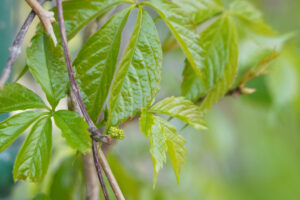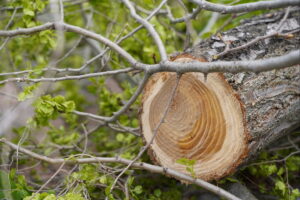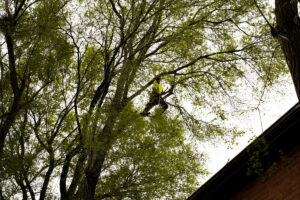Richmond Hill Tree Care: How to Safely Remove Poison Ivy from Your Trees
Competition for resources is normal in nature. Trees compete with each other for sunlight, while grass competes with trees for soil moisture and minerals. However, tree vines engage in a kind of cut-throat competition with trees for sunlight, moisture, and minerals. Thick vine growth weakens and may kill your trees, which is why you should make vine removal your top priority. However, poison ivy vines complicate the removal process because they are harmful to people. In fact, removing any type of vine growth often involves poison ivy removal as well.
Depending on your sensitivity, the effects of poison ivy can be minimal or cause severe allergic skin rashes. These rashes are caused by Urushiol, an invisible oily substance contained in poison ivy.
Removing this vine doesn\’t require physical removal from the tree. Instead, you should cut through (with pruning shears) all the vines around the trunk of the tree a few feet above the ground. This causes the vines above the cuts to die. They are left in place to decay and drop off. The vines below the cut must be completely removed including the roots. The mechanics of vine removal are simple enough. However, care is required to avoid getting poison ivy rash.
Avoiding Poison Ivy Exposure
The first step in avoiding a poison ivy rash is knowing how to identify it. You can\’t go by the shape of their leaves because some have a lobed profile while the profile of others is smooth. Poison ivy doesn\’t necessarily have an oily appearance either. However, the \”leaves of three\” rule of thumb is effective, even though there are other plant types with three-leaf clusters.
Always wear gloves, and long protective clothing. You should use a hat and goggles as well. Urushiol takes a long time to break down. This means that dead poison ivy vines and even the urushiol on your gloves can cause an allergic reaction months and even years after removing the vines. If you touch your face or other parts of your body with your gloves, a reaction may occur. Urushiol oil spreads around just like car grease. If you\’ve worked on cars, you will know how easily car grease can get all over you.
You can remove urushiol oil from your skin by washing the affected area with soap, cool water, and a wash cloth. Use vigorous friction with the washcloth. This is important because washing using your hands alone will likely leave some of the urushiol behind. Repeat the washing process three times. Avoid hot water because this opens your pores, which speeds urushiol\’s penetration into your skin.
Alternatively, you can use rubbing alcohol and a cloth. Rubbing alcohol also works well for cleaning urushiol from your tools. Remember that your gloves are a source of urushiol exposure. Because of this, many people use disposable gloves. Finally, never burn poison ivy because breathing the smoke is harmful.
You have between 2 to 8 hours after contact to wash the urushiol oil from your skin before it causes a rash.
If you require help in removing poison ivy from your trees, use the services of a Richmond Hill tree care specialist. For tree care advice and information about our services, you can follow along on Facebook and Instagram, or you can contact us here if you have any questions.





